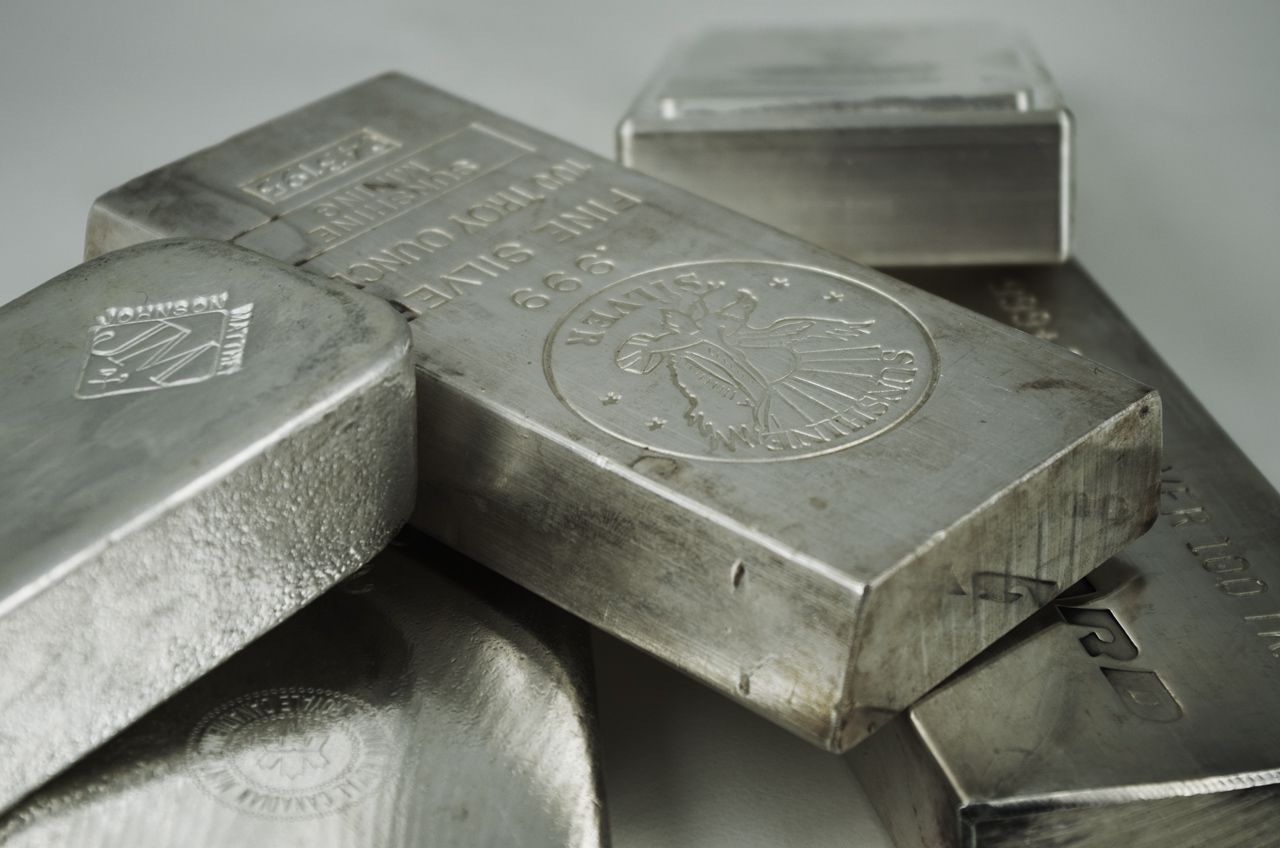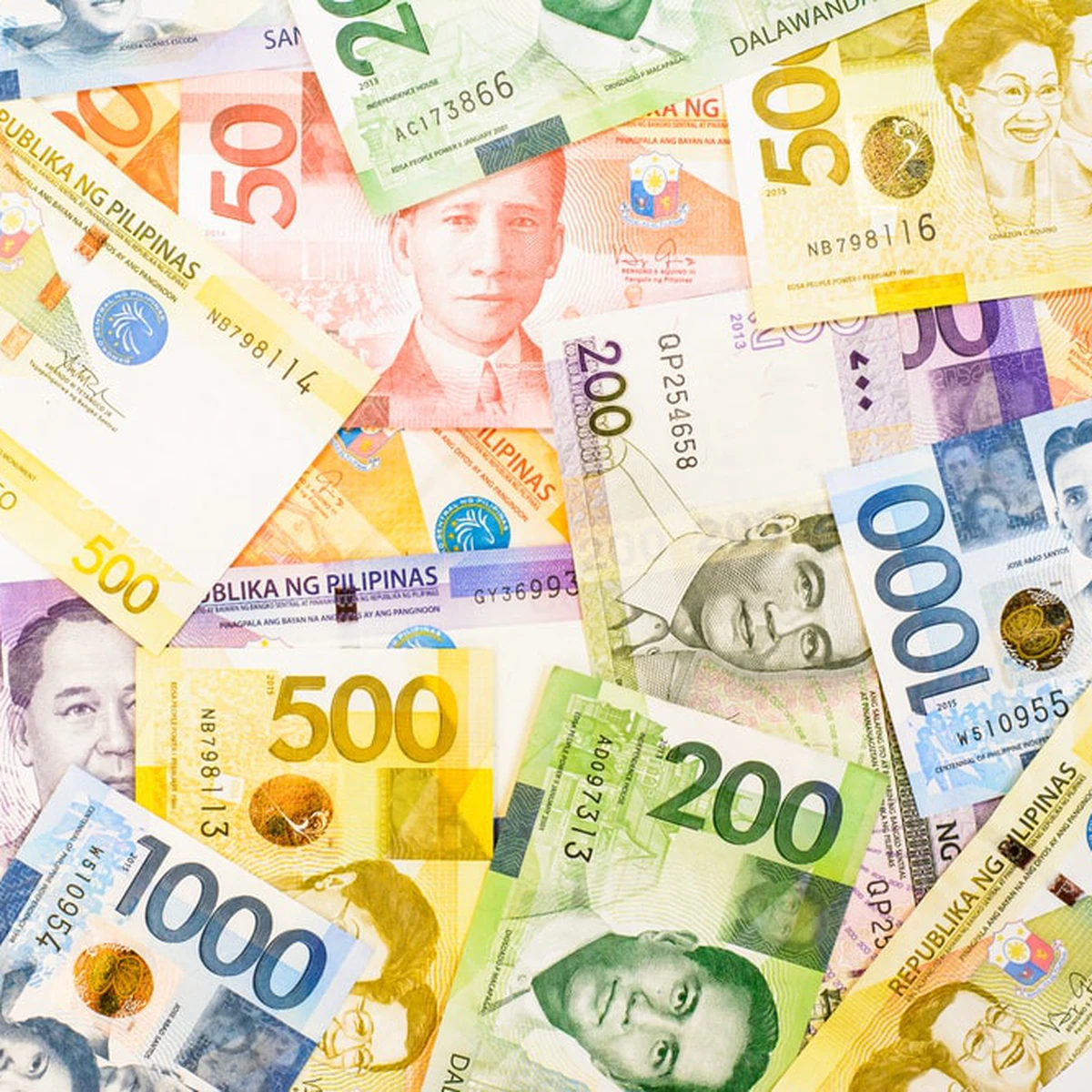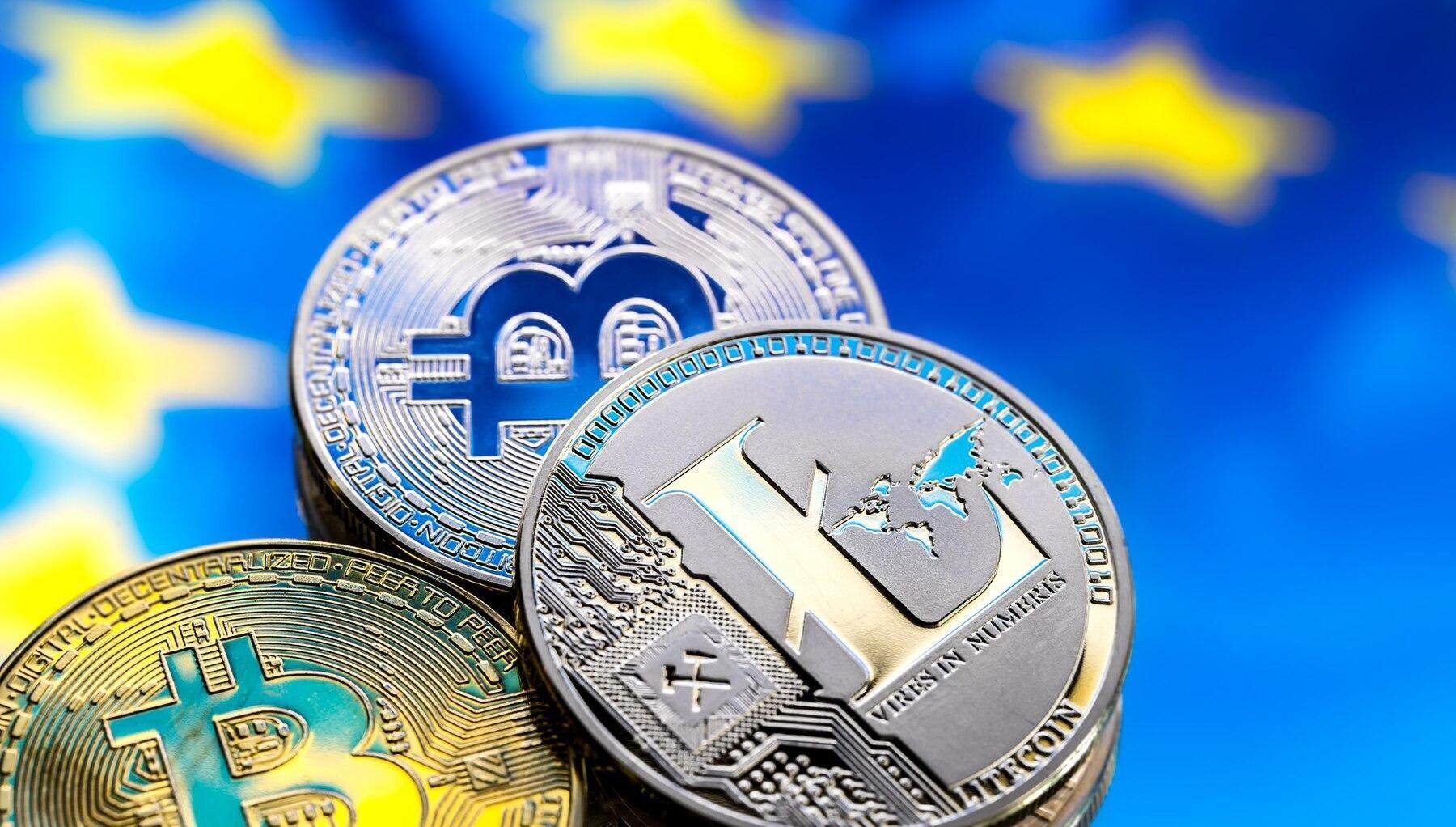Introduction
Welcome to the world of silver trading! Whether you’re a seasoned investor or just starting out, understanding the ins and outs of silver trading can help you navigate the markets and make informed decisions. In this article, we’ll take a closer look at what silver trading is all about, the factors that influence silver prices, trading strategies, and the tools you can use to maximize your trading success.
Silver trading involves buying and selling silver as a financial asset. It provides an opportunity for investors to profit from fluctuations in silver prices. The value of silver is influenced by various factors such as supply and demand dynamics, market sentiment, economic indicators, geopolitical events, and currency fluctuations.
Unlike other commodities, silver holds a unique position as both a precious metal and an industrial metal. This dual nature gives silver its distinctive market dynamics. On one hand, silver is sought after for its aesthetic value and as a store of wealth, similar to gold. On the other hand, silver is widely used in various industries such as electronics, solar panels, medicine, and photography. This industrial demand adds another layer of complexity to silver trading.
So why should you consider trading silver? Silver offers several advantages for investors. Firstly, it can serve as a hedge against inflation and currency devaluation. During times of economic uncertainty, precious metals like silver tend to hold their value and can provide a safe haven for investors. Silver also has the potential for significant price volatility, presenting traders with lucrative opportunities for profits. Additionally, silver trading allows for diversification in an investment portfolio, as it can move independently of other financial assets.
Before diving into silver trading, it is important to have a solid understanding of the forces that impact silver prices. The next section will explore the key factors that influence the silver market and how to interpret them when making trading decisions.
Basics of Silver Trading
When it comes to trading silver, it’s essential to grasp the fundamentals before jumping into the market. Here are the key aspects you should be familiar with:
Spot Price: The spot price, often referred to as the current market price, is the value of one ounce of silver at a given moment. It is determined by global supply and demand dynamics and can fluctuate throughout the trading day.
Silver Contracts: Silver can be traded through various types of contracts, including futures contracts and options contracts. Futures contracts involve an agreement to buy or sell silver at a predetermined price and date in the future. Options contracts, on the other hand, give you the right but not the obligation to buy or sell silver at a specified price within a particular time frame.
Leverage: Many brokers offer leverage in silver trading, allowing you to control a larger position with a smaller amount of capital. Leverage amplifies both profits and losses, so it’s crucial to exercise caution and use risk management strategies when trading with leverage.
Trading Hours: The silver market is open for trading 24/7, five days a week. However, the most active trading occurs during specific trading sessions, primarily in London, New York, and Tokyo. It’s important to be aware of these trading hours to take advantage of the market’s liquidity and optimal trading opportunities.
Long and Short Positions: In silver trading, you have the flexibility to take long or short positions. Going long means buying silver in the expectation that its price will rise, allowing you to sell at a higher price and make a profit. Conversely, going short involves selling silver with the anticipation that its price will decrease, enabling you to buy it back at a lower price and generate a profit.
Market Orders and Limit Orders: When executing a trade, you have the option to use a market order or a limit order. A market order allows you to buy or sell silver at the best available price in the market. On the other hand, a limit order allows you to set a specific price at which you’re willing to buy or sell silver, ensuring you enter or exit a trade at your desired price.
Now that you have a solid understanding of the basics of silver trading, let’s explore the various factors that can impact silver prices and influence your trading decisions in the next section.
Factors Affecting Silver Prices
Understanding the factors that influence silver prices is crucial for any silver trader. Here are some key factors to consider:
Supply and Demand: Like any other commodity, the basic principle of supply and demand impacts silver prices. Changes in global silver production, mine supply, and recycling rates all play a role in the overall supply of silver. On the demand side, industrial usage, jewelry manufacturing, and investment demand contribute to the demand for silver.
Economic Factors: Economic conditions, such as GDP growth, interest rates, and inflation, can significantly impact silver prices. When the economy is robust and growing, industrial demand for silver tends to increase, driving prices up. Conversely, during economic downturns, silver demand may decrease, putting downward pressure on prices.
Market Sentiment: Investor sentiment and market psychology can heavily influence silver prices. Positive news or optimistic market sentiment can lead to increased investor demand for silver as a safe haven asset, pushing prices higher. Conversely, negative news or pessimism can lead to a decrease in silver prices as investors seek other investment options.
Geopolitical Events: Geopolitical events, such as political instability, wars, or trade disputes, can have a significant impact on silver prices. Uncertainty and fear associated with these events can drive investors towards safe-haven assets like silver, causing prices to rise.
Currency Fluctuations: Silver prices are often influenced by changes in currency values. Since silver is traded globally, fluctuations in major currency exchange rates can affect the purchasing power of investors from different countries, influencing demand and, subsequently, silver prices.
Commodity Market Trends: Silver is often influenced by trends in other commodities. For example, silver prices can be impacted by changes in gold prices, as they are both considered precious metals. Additionally, industrial metals like copper can also affect silver prices due to shared demand in industrial applications.
Government Policies: Government policies, such as taxation, import/export regulations, or subsidies, can impact silver prices. For instance, changes in tax policies on silver mining or investment can influence the overall supply and demand dynamics in the market.
Global Events: Global events, such as natural disasters or pandemics, can have a significant impact on silver prices. These events can disrupt supply chains, affect industrial demand, and create economic uncertainty, leading to volatility in silver prices.
By monitoring these factors and staying updated on market news and trends, you can better anticipate and respond to price movements in the silver market. In the next section, we’ll delve into how to trade silver effectively and explore different trading strategies.
How to Trade Silver
Trading silver requires a thoughtful approach and the utilization of effective trading techniques. Here are some steps to help you get started with trading silver:
Educate Yourself: Before diving into silver trading, it’s essential to educate yourself about the market. Understand the basics of silver trading, learn about different trading strategies, and familiarize yourself with the factors that impact silver prices. Utilize reputable sources, online courses, and trading books to enhance your knowledge.
Choose a Reliable Broker: Selecting a reputable broker is crucial for silver trading. Look for brokers that offer competitive pricing, reliable trading platforms, a wide range of trading instruments, and excellent customer support. Ensure that the broker you choose is regulated by a recognized authority to ensure the safety of your funds.
Develop a Trading Plan: Create a well-defined trading plan that outlines your trading goals, risk tolerance, preferred trading strategies, and money management principles. A trading plan will help guide your decision-making process and keep your trading activities disciplined and organized.
Practice with a Demo Account: Most brokers offer demo accounts that allow you to practice trading in a risk-free environment. Take advantage of this feature to test your trading strategies, get familiar with the trading platform, and build confidence before trading with real money.
Choose the Right Trading Strategy: There are various trading strategies you can apply when trading silver, such as trend following, range trading, or breakout trading. Each strategy has its own advantages and requires a different approach. Consider your trading style, risk appetite, and market conditions to determine the most suitable strategy for your trading objectives.
Apply Risk Management Techniques: Risk management is crucial in silver trading to protect your capital. Utilize tools such as stop-loss orders to limit potential losses, set realistic profit targets, and ensure that your position sizes are in line with your risk tolerance. Never risk more than you can afford to lose.
Monitor Market Trends: Keep an eye on market trends and stay updated with relevant news and economic indicators that can impact silver prices. Utilize technical analysis tools and indicators to identify potential entry and exit points in the market.
Keep a Trading Journal: Maintaining a trading journal can help you track your trades, analyze your performance, and identify areas for improvement. Record your trading decisions, the reasons behind them, and the outcomes. Regularly review your journal to learn from both successful and unsuccessful trades.
Continuous Learning and Adaptation: The silver market is dynamic, and it’s important to continuously learn and adapt your trading strategies. Stay updated with market trends, attend webinars or workshops, and be open to refining your approach based on new information.
Remember, successful silver trading requires patience, discipline, and continuous learning. By following these steps and maintaining a strategic approach, you can enhance your chances of becoming a proficient silver trader. In the next section, we will delve into different trading strategies that can potentially boost your silver trading performance.
Silver Trading Strategies
Developing a well-defined trading strategy is essential for success in silver trading. Here are a few popular strategies that can be employed when trading silver:
Trend Following: This strategy involves identifying and following the prevailing trend in silver prices. Traders using this strategy aim to enter trades in the direction of the trend and ride the price momentum. They may use technical indicators such as moving averages or trend lines to confirm the trend and determine entry and exit points.
Range Trading: Range trading involves identifying key support and resistance levels in the silver price chart and trading within that range. Traders employing this strategy buy near support levels and sell near resistance levels, taking advantage of price oscillations within the defined range.
Breakout Trading: Breakout traders look for significant price levels or chart patterns where silver breaks out from a consolidation phase. They enter trades when the price breaks above the resistance level or below the support level with increased volume, expecting a continuation of the breakout move. Stop-loss orders are typically placed to limit potential losses if the breakout fails.
Scalping: Scalping is a short-term trading strategy that aims to take advantage of small price movements. Scalpers may enter multiple trades within a day, aiming to capture quick profits from small price fluctuations. This strategy requires prompt decision-making and close monitoring of the market.
News Trading: News traders focus on significant economic announcements, geopolitical events, or other news that may impact silver prices. They aim to capitalize on the market volatility created by the news release. Traders using this strategy closely follow economic calendars and news sources to identify potential trading opportunities.
Mean Reversion: The mean reversion strategy is based on the assumption that the price of silver will eventually revert to its average value. Traders using this strategy look for price divergences and extreme price movements, anticipating a reversal back to the mean. They may utilize technical indicators or statistical models to identify potential entry and exit points.
Pair Trading: Pair trading involves simultaneously entering two correlated trades, one long and one short. Traders employing this strategy look for imbalances in the prices of two related silver assets, aiming to profit from the price convergence of the two assets.
It’s important to note that no trading strategy guarantees profits, and each strategy has its own risks and considerations. Traders should carefully test and evaluate different strategies, considering their risk tolerance, trading style, and market conditions. It’s also recommended to combine multiple strategies or adapt them to suit individual preferences.
By incorporating a well-defined trading strategy and thoroughly understanding the chosen approach, traders can increase their chances of making informed trading decisions and potentially improve their overall performance in the silver market. In the next section, we will discuss how to analyze silver market trends to aid in decision-making.
Analyzing Silver Market Trends
Analyzing silver market trends is a crucial aspect of successful trading. By understanding market trends, traders can make informed decisions and improve their trading strategies. Here are some key methods for analyzing silver market trends:
Technical Analysis: Technical analysis involves studying historical price data, chart patterns, and various technical indicators to identify potential future price movements. Traders using technical analysis analyze patterns such as support and resistance levels, trend lines, moving averages, and candlestick patterns to make predictions about future silver price trends.
Fundamental Analysis: Fundamental analysis focuses on evaluating the underlying factors that impact the supply and demand of silver. Traders employing this analysis study economic indicators, geopolitical events, and industry trends to gauge the outlook for silver prices. For example, analyzing industrial demand for silver in sectors such as electronics, solar energy, and healthcare can provide insights into the future direction of prices.
Sentiment Analysis: Sentiment analysis involves gauging the overall market sentiment, investor psychology, and the prevailing mood towards silver. Traders assess market sentiment through sources such as news articles, social media sentiment, and surveys. Positive sentiment can indicate bullish market conditions, while negative sentiment may suggest a bearish outlook for silver.
Intermarket Analysis: Intermarket analysis involves studying the relationships between various markets such as stocks, currencies, and commodities to gain insights into silver price trends. For example, analyzing the correlation between silver and gold prices can provide valuable information about the overall precious metals market sentiment.
Volume Analysis: Volume analysis focuses on analyzing the trading volume accompanying price movements. By studying the volume patterns, traders can identify significant price levels and confirm the strength of a trend. High trading volume during price breakouts or reversals may indicate an increased probability of sustained price moves.
Seasonal Patterns: Silver prices can exhibit certain seasonal patterns that traders can take advantage of. For example, silver demand tends to rise during the holiday season due to increased jewelry purchases. By identifying the historical seasonal patterns, traders can adjust their trading strategies accordingly.
It’s important to note that no single analysis method can guarantee accurate predictions of future price trends. Traders often use a combination of these analysis techniques to build a comprehensive view of the silver market. It’s also essential to stay updated with current market news and events that may impact silver prices.
By regularly analyzing silver market trends and adapting trading strategies accordingly, traders can enhance their decision-making process and potentially increase their chances of success in the silver market. In the next section, we will explore the risks and challenges involved in silver trading.
Risks and Challenges in Silver Trading
Although silver trading can be rewarding, it is important to be aware of the risks and challenges involved in this market. Understanding and managing these risks is essential for a successful trading journey. Here are some key risks and challenges to consider:
Price Volatility: Silver prices can be highly volatile, experiencing sharp price swings within short periods. This volatility can lead to significant profit opportunities but also poses the risk of substantial losses. Traders should be prepared for rapid price fluctuations and utilize risk management tools like stop-loss orders to mitigate potential losses.
Liquidity: While the silver market is generally liquid, there can be periods of low liquidity, especially in certain trading sessions. During these times, it may be difficult to enter or exit trades at desired price levels. It is important to be cautious when trading during low liquidity periods, as spreads can widen and slippage can occur.
Market Manipulation: Like any financial market, the silver market is susceptible to manipulation. Traders should be aware of the risk of market manipulation by individuals or groups that can create artificial price movements. Staying informed and being vigilant about unusual market activities can help traders mitigate this risk.
Margin Calls and Leverage: Trading on margin and utilizing leverage can increase potential profits, but it also amplifies losses. Traders should be aware of the risks associated with margin trading and ensure they have a solid risk management plan in place. Margin calls can result in the need to deposit additional funds to maintain open positions or face position liquidation by the broker.
Geopolitical and Economic Events: Geopolitical events, economic data releases, and policy changes can have a significant impact on silver prices. Unforeseen events such as political instability, trade disputes, or economic crises can create volatility and uncertainty in the market. Traders should closely monitor such events and be prepared for sudden market movements and increased risk levels.
Overdependence on Indicators: While technical indicators are useful tools for analyzing silver market trends, relying solely on indicators can be risky. Indicators are based on historical data and may not always accurately predict future price movements. Traders should use indicators in conjunction with other analysis techniques and consider the broader market context.
Risk of Loss of Capital: Trading always carries the risk of losing capital. It is essential to only trade with funds that you can afford to lose and have a risk management plan in place. Traders should avoid trading with emotions and take a disciplined approach to manage risk effectively.
Technology and Connectivity Issues: In the digital age of trading, technical glitches, internet connectivity issues, and power outages can disrupt trading activities. Traders should have backup plans, backup internet connections, and access to alternative trading platforms to mitigate the risk of such issues impacting their trading activities.
By being aware of these risks and challenges, and taking necessary precautions, traders can navigate the silver market more effectively. It is important to stay informed, continuously learn, and adapt risk management strategies to mitigate potential risks. In the next section, we will explore the tools and platforms available for silver trading.
Silver Trading Tools and Platforms
Trading silver is made easier and more efficient with the help of specialized trading tools and platforms. Here are some essential tools and platforms that can enhance your silver trading experience:
Trading Platforms: A reliable trading platform is crucial for executing trades and monitoring market movements. Look for platforms that offer intuitive user interfaces, real-time market data, advanced charting tools, and order execution capabilities. Popular trading platforms such as MetaTrader 4 (MT4) and MetaTrader 5 (MT5) are widely used by traders around the world for their comprehensive features and ease of use.
Mobile Trading Apps: Mobile trading apps offer the convenience of trading on the go. They provide access to real-time market data, trading features, and account management tools directly on your smartphone or tablet. Mobile trading apps are especially useful for monitoring silver prices and managing trades while away from your computer.
Charting Software: Charting software allows traders to analyze historical price data and identify patterns, trends, and potential trade opportunities. Look for charting software that offers a wide range of technical indicators, drawing tools, and customization options. Some popular charting software options include TradingView, MultiCharts, and NinjaTrader.
News and Economic Calendars: Staying up to date with the latest news and economic events is essential for silver trading. News platforms and economic calendars provide real-time news updates, economic indicators, and event schedules that can impact silver prices. By integrating news and economic calendars into your trading routine, you can make more informed trading decisions.
Risk Management Tools: Risk management tools help traders protect their capital and manage their risk exposure. Stop-loss orders allow you to set a predetermined exit point for a trade to limit potential losses. Take-profit orders allow you to automatically close a position when it reaches a specified profit level. Trailing stops can trail the market price to lock in profits as the price moves in your favor.
Algorithmic Trading Software: Algorithmic trading, also known as automated trading, allows traders to execute trades automatically based on pre-defined rules and strategies. Algorithmic trading software analyzes market data and executes trades on behalf of the trader. This type of software can help traders take advantage of market opportunities even when they are not actively monitoring the market.
Social Trading Platforms: Social trading platforms enable traders to follow and replicate the trades of successful traders. These platforms allow users to connect, share trading insights, and view the trading activities of established traders. Social trading platforms provide an opportunity to learn from experienced traders and potentially improve trading performance.
Backtesting Software: Backtesting software allows traders to test and evaluate trading strategies using historical data. By simulating trades on past market conditions, traders can assess the performance and profitability of their strategies before applying them in live trading. This helps traders refine their strategies and make more informed decisions.
Broker Research and Analysis Tools: Many brokers provide research and analysis tools to their clients, including market commentaries, technical analysis reports, and economic research. These tools can provide valuable insights into the silver market and help traders make more informed trading decisions.
Choosing the right combination of trading tools and platforms is important for optimizing your silver trading experience. Consider your trading needs, preferences, and budget when selecting tools and platforms that suit your requirements. Experiment with different tools and utilize those that enhance your trading strategy and align with your trading goals. In the next section, we will provide some tips for successful silver trading.
Tips for Successful Silver Trading
Successful silver trading requires a combination of knowledge, skill, and experience. Here are some tips to help you improve your silver trading performance:
Educate Yourself: Continuously educate yourself about the silver market, trading strategies, and market analysis techniques. Stay updated with market news, industry trends, and economic indicators that can impact silver prices. The more knowledge you have, the better equipped you’ll be to make informed trading decisions.
Develop a Trading Plan: Create a well-defined trading plan that outlines your trading goals, risk tolerance, and preferred trading strategies. A comprehensive trading plan helps you stay disciplined and focused, reducing the chances of making impulsive or emotional trading decisions.
Practice with a Demo Account: Before trading with real money, practice trading with a demo account. This allows you to test your strategies, familiarize yourself with the trading platform, and gain confidence without risking any capital. Use the demo account to refine your skills and fine-tune your trading approach.
Manage Risk: Implement proper risk management techniques to protect your capital. Set stop-loss orders to limit potential losses, never risk more than a small percentage of your trading capital on a single trade, and diversify your portfolio to minimize exposure to any one trade or market event.
Control Emotions: Emotions can cloud judgment and lead to impulsive trading decisions. Practice emotional discipline by sticking to your trading plan and avoiding emotional reactions to market fluctuations. Remain calm and objective when making trading decisions based on well-defined strategies and analysis.
Adapt to Market Conditions: The silver market is dynamic, and market conditions can change quickly. Be flexible and adapt your trading strategies to suit the current market environment. Continuously monitor silver price trends, adjust your strategies when necessary, and remain open to learning new techniques.
Set Realistic Expectations: Setting realistic expectations is important to maintain a healthy trading mindset. Understand that not every trade will be a winner, and losses are a part of trading. Focus on long-term profitability rather than short-term gains, and avoid chasing quick profits or trying to predict every market movement.
Keep a Trading Journal: Maintain a trading journal to track your trading activities, analyze your performance, and identify areas for improvement. Record your trades, including entry and exit points, reasoning behind the trade, and lessons learned. Regularly review your trading journal to identify patterns and refine your strategies.
Learn from Mistakes: Every trader makes mistakes. Instead of dwelling on losses or missed opportunities, view them as learning experiences. Analyze your mistakes, identify areas for improvement, and adjust your strategies accordingly. Making mistakes is part of the learning process and can ultimately contribute to your growth as a trader.
Stay Disciplined and Patient: Successful silver trading requires discipline and patience. Stick to your trading plan, avoid impulsive trades, and resist the urge to chase after quick profits. Maintain a long-term perspective and focus on consistent, well-executed trades based on solid analysis and risk management.
Remember that successful silver trading takes time and practice. Be patient, persist in your efforts to improve, and remain committed to continuous learning. By implementing these tips and developing your own trading style, you can increase your chances of success in the silver market.
Conclusion
Silver trading offers an exciting opportunity for investors to participate in the dynamic precious metals market. By understanding the basics of silver trading, the factors that influence silver prices, and utilizing effective trading strategies, traders can navigate the market with confidence and improve their chances of success.
In this article, we explored the fundamentals of silver trading, including spot prices, silver contracts, and trading hours. We also discussed the factors that affect silver prices, such as supply and demand, economic indicators, market sentiment, and geopolitical events. Furthermore, we delved into various trading strategies, including trend following, range trading, breakout trading, and news trading, to aid traders in making informed decisions.
Analyzing silver market trends through technical analysis, fundamental analysis, sentiment analysis, and other methods is crucial for traders to gauge market sentiment and identify potential trade opportunities. We also highlighted the risks and challenges involved in silver trading, emphasizing the importance of risk management and staying informed about market events.
Additionally, we explored the essential tools and platforms available to silver traders, such as trading platforms, charting software, news and economic calendars, and risk management tools. These tools can enhance trading efficiency and provide valuable insights into the market.
To improve trading performance, we provided tips for successful silver trading, including continuous education, developing a trading plan, practicing with a demo account, managing risk, controlling emotions, adapting to market conditions, setting realistic expectations, keeping a trading journal, and learning from mistakes.
As with any form of trading, consistent profitability in silver trading requires skill, knowledge, discipline, and practice. It’s essential to stay informed, adapt to changing market conditions, and continuously refine your trading strategies. By implementing the tips and techniques discussed in this article, you can take important steps towards becoming a successful silver trader.

























